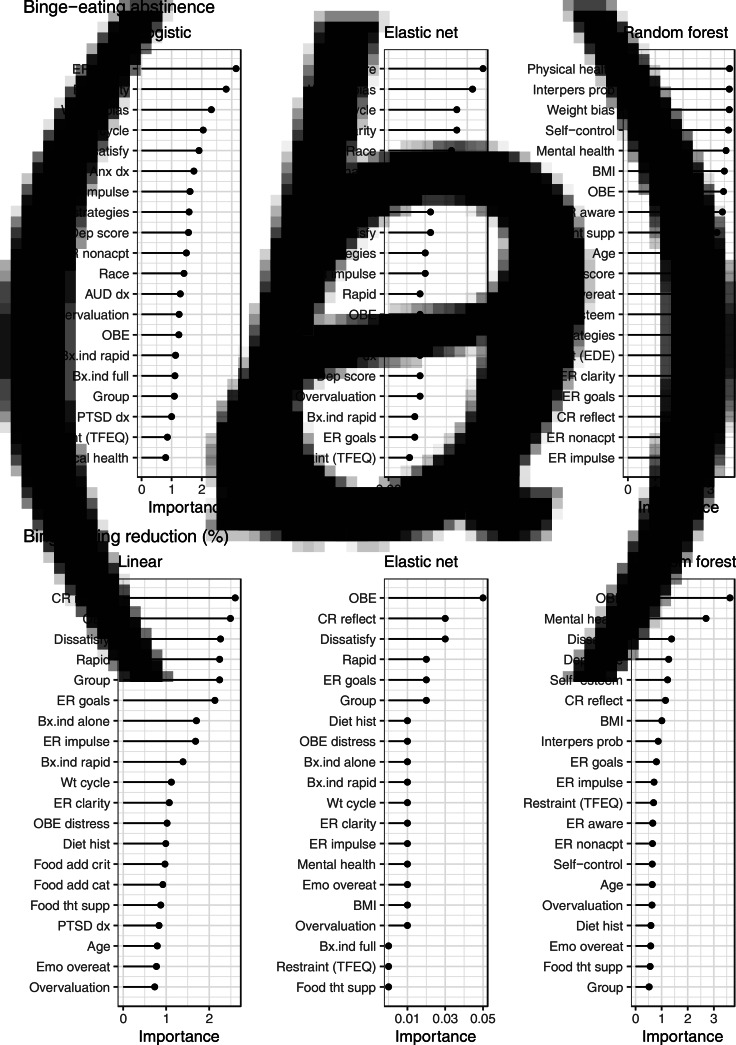Fig. 1.
Top 20 average variable importance scores across resampling methods for each model type in the prediction of (a) binge-eating abstinence and (b) binge-eating reduction (%).
Note. ER = emotion regulation, Weight bias = weight bias internalization, Wt cycle = weight cycling, Dissatisfy = weight/shape dissatisfaction, Anx dx = anxiety disorder, Dep score = depression score, nonacpt = nonacceptance, AUD dx = alcohol use disorder, overvaluation = weight/shape overvaluation, OBE = objective binge episode, Bx.ind = binge-eating disorder behavioral indicator, TFEQ = Three Factor Eating Questionnaire, rapid = rapid treatment response, Interpers prob = interpersonal problems, BMI = body mass index, Food tht supp = Food thought suppression, Emo overeat = emotional overeating, CR = cognitive rumination, Diet hist = diet history, Food add crit = food addiction criteria, Food add cat = food addiction category.
Each x axis has a unique scale. Despite differing scales, interpretation remains consistent where higher variable importance corresponds to greater importance in predictive accuracy.

